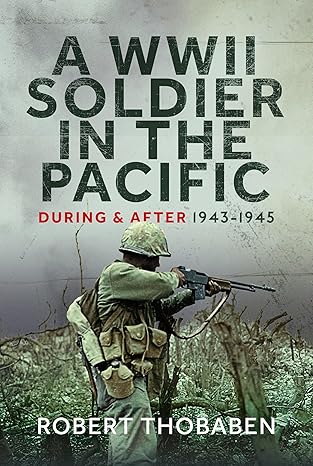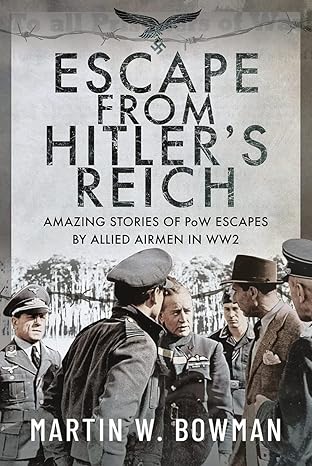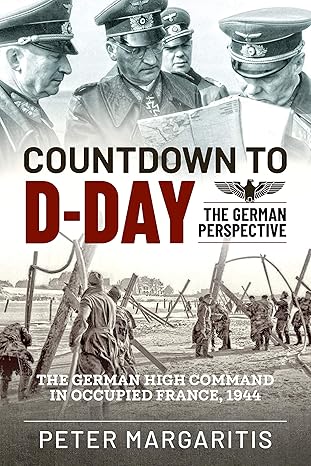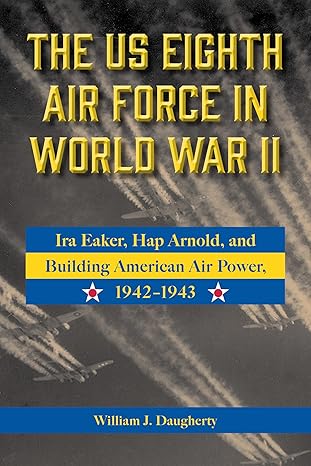Dutch Harbor: The Unraveling of Japan's Pacific Strategy
By Del C. Kostka
Admiral Isoroku Yamamoto drew his hand across a map of the northern Pacific Ocean in a long, sweeping arc. From Attu Island on the far western edge of the Bearing Sea, the admiral traced his finger along the Aleutian archipelago to the island of Amaknak near the Alaskan mainland. There, in June of 1942, Yamamoto intended to strike the American forces at Dutch Harbor. As a strategist, Yamamoto had achieved near deity status among the Japanese Imperial High Command. His crushing attack on Pearl Harbor just six months prior was followed by quick and decisive victory in the Philippines, Malaya, and the East Indies. Now, with the southwest Pacific under firm Japanese control, Yamamoto looked to expand offensive operations to the north and central Pacific. By attacking key strategic points in the Aleutians, as well as Midway Island on the western tip of the Hawaiian chain, he intended to lure the already weakened U.S. Pacific fleet from Pearl Harbor to its final destruction.[1] Yet despite his meticulous planning, his intellect and his vaunted reputation, the attack on the remote Alaskan harbor upon which he now rested his finger would prove to be one of Yamamoto's greatest strategic blunders.
The Strategic Setting
Japan had gathered extensive information about the Aleutians prior to the war.[2] The islands constitute a natural corridor between the Eastern and Western Hemispheres, and by occupying key strategic locations along the Aleutians the Japanese hoped to control and defend the northern perimeter of their expanding empire.[3] Dutch Harbor was considered vital to Japanese operations in the northern Pacific. As the only developed deep water port along the vast Aleutian chain, it was assumed that the United States would establish a major fleet presence within the harbor including berthing for one or two aircraft carriers.[4] By destroying this facility, the Japanese could run roughshod over the northern Pacific as they had in the southwest after the crippling of Pearl Harbor.
To implement his plan, Yamamoto partitioned an Aleutian attack force from the immense Imperial fleet. Commanded by Vice Admiral Boshiro Hosogaya, this Northern Area Fleet was comprised of the aircraft carriers Junyo and Ryujo, 5 cruisers, 12 destroyers, 6 submarines, 4 troop transports, and a plethora of auxiliary support ships. Hosogaya's task was to launch an air attack against Dutch Harbor to degrade American offensive capabilities in the region, then seize and occupy the island of Adak, 480 miles to the west. The campaign would conclude with additional amphibious landings on Kiska and Attu, the two westernmost islands in the Aleutian chain.[5] All totaled, Yamamoto's bold plan would disperse operations across 900 miles of turbulent arctic seas.
Simultaneous to the attack on Dutch Harbor, Yamamoto would send the largest component of his fleet to attack and seize the island of Midway. Given the strategic importance of Midway, Yamamoto hoped that Admiral Chester Nimitz, Commander in Chief of the United States Pacific Fleet, would commit the majority of his forces in a desperate attempt to defend the island.[6] Yamamoto felt his Central Area Fleet, which included 4 large aircraft carriers and 9 battleships, was more than adequate to destroy the American fleet which was still reeling from Pearl Harbor and the Battle of the Coral Sea fought just four weeks prior. But Nimitz had a trump card that Yamamoto did not realize; US Navy cryptographers at Pearl Harbor had just broken the Japanese naval code. By late May of 1942, Admiral Nimitz knew about the Midway and Aleutian operations, the approximate dates of the attack, and the relative strength of both the Northern and Central Area Fleets.[7]

The Japanese Aircraft Carrier Junyo |
To engage the larger of the two Japanese fleets, Nimitz consolidated his three serviceable aircraft carriers into a Midway task force. He sent a smaller contingent, designated Task Force 8, to the Aleutians under the command of Rear Admiral Robert Theobald. Theobald's orders were simple and direct; to hold Dutch Harbor and prevent the Japanese from gaining a foothold in Alaska.[8] Task Force 8 included 5 cruisers, 14 destroyers, and 6 submarines. Air power, such as it was, would be provided by the U.S. Army Air Corps Eleventh Air Force, a hastily assembled collection of B-17s, B-26s and Curtis P-40 Warhawks flying out of Elmendorf Airfield in Anchorage and Cold Bay Airfield on the westernmost tip of the Alaskan peninsula. An additional squadron of P-40s was also dispatched to Fort Glenn, a secret Army air base just 40 miles west of Dutch Harbor on Umnak Island.[9]
The Attack on Dutch Harbor
On May 30, 1942, Hosogaya's fleet slipped quietly out of Ominato naval base on the Japanese main island of Honshu.[10] Little did Hosogaya know that his hopes of total surprise had already been thwarted by US Naval Intelligence. By June 1st the entire coastline from Nome, Alaska to Seattle, Washington had been placed on 24-hour high alert, and PBY reconnaissance aircraft out of Dutch Harbor and Cold Bay probed deep into the North Pacific sea lanes in search of the Japanese fleet.[11] The American defenders did not have long to wait. On June 2nd two Japanese aircraft carriers were spotted less than 400 miles south of Kiska Island.[12] When word of the sighting reached Admiral Theobald, he positioned Task Force 8 in the Gulf of Alaska about 400 miles southeast of Kodiak Island in order to intercept any Japanese attempts to land troops on the Alaskan mainland. His plan was to attack the Japanese aircraft carriers with the B-17s and B-26s out of Elmendorf before engaging the remainder of the Japanese surface fleet, but low clouds and a notorious Aleutian squall wind known as a “williwaw” soon concealed the Japanese force from further reconnaissance.[13]
Hosogaya was now aware that he had lost the element of surprise. Early the next morning, despite dense fog and relentlessly churning seas, he decided to launch his air attack against Dutch Harbor while the exact location of his fleet was still a matter of speculation to the American air forces. As Ryujo and Junyo turned their bows into the wind, an attack force of “Kate” torpedo bombers, “Val” dive bombers and top of the line “Zero” fighters roared to life on deck. But carrier operations in the harsh Aleutian weather proved to be very precarious. Almost immediately, a Kate launching off the Ryujo plunged into the sea when the ship's bow dipped into the trough of a wave. On the Junyo, the entire attack force became so disoriented in the fog and darkness after launch that they quickly turned back. In all, only six Kates and six Zeros from the Ryujo found their way to Dutch Harbor in the initial wave.[14]
In Dutch Harbor, the Naval Air Station greeted the day at full battle stations.[15] In the harbor were two old destroyers, the King and Talbot, the seaplane tender Gillis, the submarine S-27, the Coast Guard cutter Onondaga, and the U.S. Army transports President Fillmore and Morlen.[16] It was a far cry from the target-rich armada the Japanese attack force expected to find. At 0540 a large blip appeared on the station's radar.[17] As the Japanese pilots broke through the clouds and descended on the harbor, they were astounded by the immediate response of American gun crews and the intensity of antiaircraft fire.[18] Finding no aircraft carriers or primary targets, the Japanese quickly released their bombs on conspicuous shore facilities and made a hasty departure back to the Ryujo. Two barracks and three Quonset huts were destroyed in the initial attack with approximately 50 American casualties.[19] The Japanese spent so little time over target that the squadron of P-40s scrambled from Fort Glenn arrived too late to even see their adversaries. As the afternoon stretched into evening, American PBY's continued to search in vain for the Japanese fleet. After 48 hours of continuous operation, both aircraft and air crews were nearing the limits of endurance.[20]

Dutch Harbor battle damage – June 3rd, 1942 |
The morning of June 4th was still rainy and overcast. Hosogaya realized the previous day's air raid on Dutch Harbor had been ineffective. Two thousand miles to the south, American and Japanese naval forces were engaged in the epic Battle of Midway, and Hosogaya desperately wanted a break in the weather in order to add the destruction of Dutch Harbor to this great day of victory. By afternoon the shroud of low laying clouds began to clear. At 1740 an Army Observation Post on the Amaknak coast reported three flights of enemy aircraft headed towards Dutch Harbor. At 1800 ten Zeros screamed over the Naval Air Station in a low strafing attack, followed by eleven Val dive bombers each delivering a single, 550 lb bomb.[21] One of the bombs hit squarely in the center of four 6,500-barrel fuel oil tanks which exploded in a spectacular fireball.[22] An old transport ship which had been beached for use as a barracks was also destroyed, as was a large warehouse and an empty aircraft hangar.[23]

Converted into a laborer's barracks, the transport ship Northwestern burns in Dutch Harbor |
At 1820 eight Kate bombers approached the harbor from the north. Their bomb loads dropped from high altitude were mainly ineffective, although one struck a 20-mm antiaircraft gun emplacement killing a Navy officer and three men.[24] While the bombers concentrated their efforts on larger targets in the immediate harbor area, Japanese Zeros strafed shore installations around the perimeter of the bay. One unfortunate PBY Catalina returning from a reconnaissance patrol flew directly into the maelstrom. It was quickly set upon by three Zeros and brought down in the outer harbor. As the plane began to sink, some of the crew began to paddle toward shore in a rubber life raft. As horrified American antiaircraft gun crews watched from shore, the Zeros continued to strafe the life raft until all of the Catalina crew were dead.[25]
As the Zeros arched back towards the harbor, the enraged American gun crews threw their full furry at the three offending aircraft. One round severed the main oil line of the Zero flown by Tadayoshi Koga, a 19 year old Flight Petty Officer off the carrier Ryujo. With his Zero trailing a stream of smoke, Koga headed eastward over Amaknak in a desperate attempt to make an impromptu landing before his engine seized.[26] The nearby island of Akutan had been designated an emergency landing area by the Japanese, who had a plan in place to extract downed pilots via submarine.[27] The flat lowlands of Akutan seemed an ideal landing zone when viewed from the air, but the ground told a different story. The area that Koga chose to land was covered in muskeg, a thick, wet and spongy mat of grass and weeds that blankets the Aleutian tundra. The bog snared the Zero's landing wheels immediately on contact and flipped the aircraft end over end, snapping Koga's neck in the process. The Zero sat upside down and nearly intact, the lifeless Koga behind the controls, for over a month before being discovered by a passing American reconnaissance aircraft.[28]
Other Japanese pilots suffered a fate similar to Koga. The last group of Vals to depart Dutch Harbor ran straight into a patrol of six P-40 Warhawks that had been scrambled from Fort Glenn. The American P-40 pilots enthusiastically slammed into the Vals, quickly knocking four of the lumbering dive bombers along with their two man crews into the frigid sea.[29]
On his flagship, the Nachi, Hosogaya studied weather reports and waited nervously for the strike force to return. His concern was heightened by the periodic appearance of American B-26 bombers who individually stumbled upon the carrier group but failed to mount a coordinated attack due to the thick and patchy cloud cover.[30] As the carriers began to recover their returning aircraft, a knock on the door of the admiral's bridge brought a puzzling coded message from Yamamoto; the Northern Area Fleet was to discontinue operations against Dutch Harbor, abort the Adak invasion, and return at once to Ominato to rendezvous with the Midway strike group.[31] To the astute Hosogaya, the unwritten meaning behind the vague message was clear; something had gone terribly wrong at Midway.
Aftermath
As the Northern Area Fleet steamed westward towards the outer Aleutians, Admiral Hosogaya pondered the outcome of his mission. Tactically, the attack on Dutch Harbor had been ineffective. No high value naval targets had been destroyed, damage to port infrastructure was minimal, and the planned occupation of Adak Island was cancelled entirely. 78 Americans were killed in action during the two days of engagement. The Japanese losses were more material in nature. A total of eleven Japanese aircraft were lost due to weather, ground fire and air to air combat.[32] But it was the loss of just one of these aircraft that would prove to be most significant; Flight Petty Officer Koga's Zero, which sat unnoticed on the Aleutian tundra for over a month, was a gold mine for US Intelligence.
In early 1942, the Mitsubishi Model 21 “Zero” fighter was the scourge of the Pacific skies. Fast, light weight and extremely agile, the Zero was thought to be nearly invincible by the American and British airmen who had flown against it during the early stages of the war. Once salvaged and transported to the North Island Naval Air Station in San Diego, Koga's Zero began to reveal its secrets and one glaring weakness; for all of its superior maneuverability, the Zero's engine invariably cut out when nosing into a vertical dive due to a temperamental float type carburetor. Armed with this critical information, Allied air forces soon developed aerial combat tactics that more than evened the playing field against the dreaded Zero.[33]

Recovered Japanese Zero being prepared for transport to United States mainland |
Strategically, Yamamoto's foray into the barren Aleutians may have damaged the Japanese war effort even more than the intangible loss of air superiority. Without control of Midway, Japanese presence in the Aleutians was pointless.[34] The western Aleutian islands of Attu and Kiska, which the Japanese seized in late June of 1942, were retaken by an American invasion force in May of 1943. Moreover, military historians still question the wisdom of Yamamoto's decision to split the Imperial Japanese Fleet and conduct simultaneous offensive operations in both the north and central Pacific.[35] Could the two aircraft carriers that were so fruitlessly deployed to attack Dutch Harbor have been of service to Yamamoto at Midway, and would they have turned the tide in arguably the most decisive naval battle in all of history?
| * * * |
Show Notes
Footnotes
[1]. Galen Roger Perras. Stepping Stones to Nowhere. Annapolis: Naval Institute Press, 2003. 67. Print.
[2]. Bert Webber. Aleutian Headache; Deadly World War II Battles on American Soil. Medford: Webber Research Group Publishers, 1993. 19. Print.
[3]. Brian Garfield. The Thousand Mile War. Fairbanks: The University of Alaska Press, 1969. 7. Print.
[4]. MacGarrigle, George L. The Aleutian Islands War; June 3 1942 - August 24 1943. West Point: United States Army Center for Military History, CMH Pub 72-6. n.d. Web. 5.
[5]. Ibid, 5.
[6]. Ibid, 5.
[7]. Samantha Seiple. Ghosts in the Fog. New York: Scholastic Press, 2011. 22. Print.
[8]. MacGarrigle, 5.
[9]. Ibid, 6.
[10]. Okumiya, Masatake, Commander, I.J.N., Interrogation by Captain C. Shands, USN. Tokyo, 12 October 1945. Web. 15 May 2013.
[11]. Department of the Navy. United States Navy Combat Narrative: The Aleutians Campaign June 1942--August 1943. Washington: Naval Historical Center, 1993. 28 April 2012. Web. 5.
[12]. Garfield, 13
[13]. MacGarrigle, 6.
[14]. Okumiya, interrogation of
[15]. United States Navy Combat Narrative, 6.
[16]. Ibid, 6.
[17]. Webber, 38
[18]. Garfield, 35
[19]. United States Navy Combat Narrative, 6.
[20]. Ibid, 17.
[21]. Ibid, 7.
[22]. Ibid, 7.
[23]. Ibid, 7.
[24]. Ibid, 8.
[25]. Rearden, Jim. “Recovered Japanese Zero Changes Pacific Air War.” n.d. Web. 25 May 2013.
[26]. Hanes, Elizabeth “The Akutan Zero: How a Captured Japanese Fighter Plane Helped Win World War II.” History.com., 4 June 2012, Web. 25 May 2013.
[27]. Ibid
[28]. Ibid
[29]. Garfield, 51
[30]. Ibid, 44
[31]. Ibid, 48
[32]. Webber, 53
[33]. Hanes
[34]. Garfield, 52
[35]. Perras, 81
| * * * |
© 2025 Del C. Kostka.
Written by Del C. Kostka.
About the author:
Del C. Kostka is a staff officer at the National Geospatial Intelligence Agency in St. Louis, Missouri. He has a Masters Degree in Operational Arts and Military Science from the US Air Force Air Command and Staff College.
* Views expressed by contributors are their own and do not necessarily represent those of MilitaryHistoryOnline.com.




















